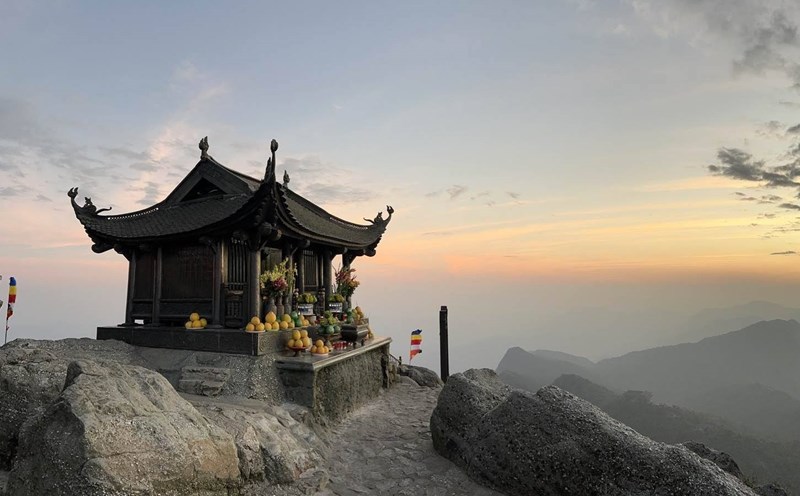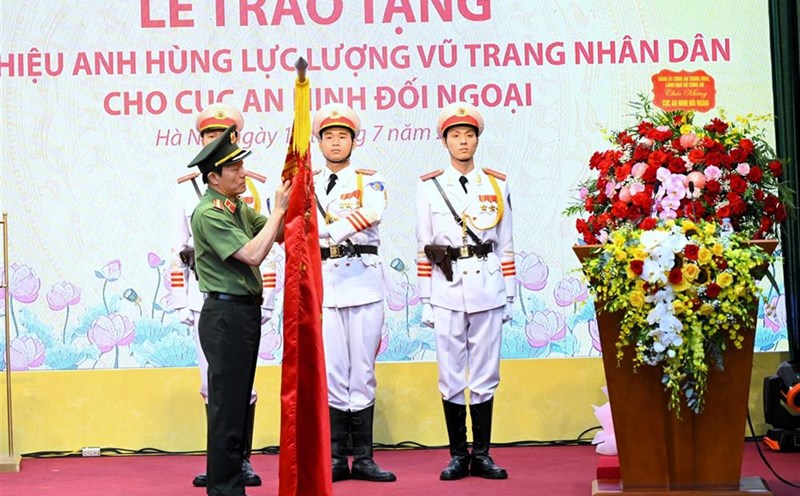Sweet taste on the earth
Previously, people in Long Hung commune, Can Tho city mainly grew sugarcane, cajuput or some fruit trees such as oranges and tangerines. However, due to the characteristics of rice-infected land, crops often develop poorly, and prices are unstable, causing many households to have unstable incomes.
Faced with that reality, the locality has focused on renovating irrigation infrastructure, proactively coordinating with the agricultural sector to organize tours of the MD2 pineapple growing model in other localities. From the actual trip, many people began to change their perception of crops suitable for alum soil.
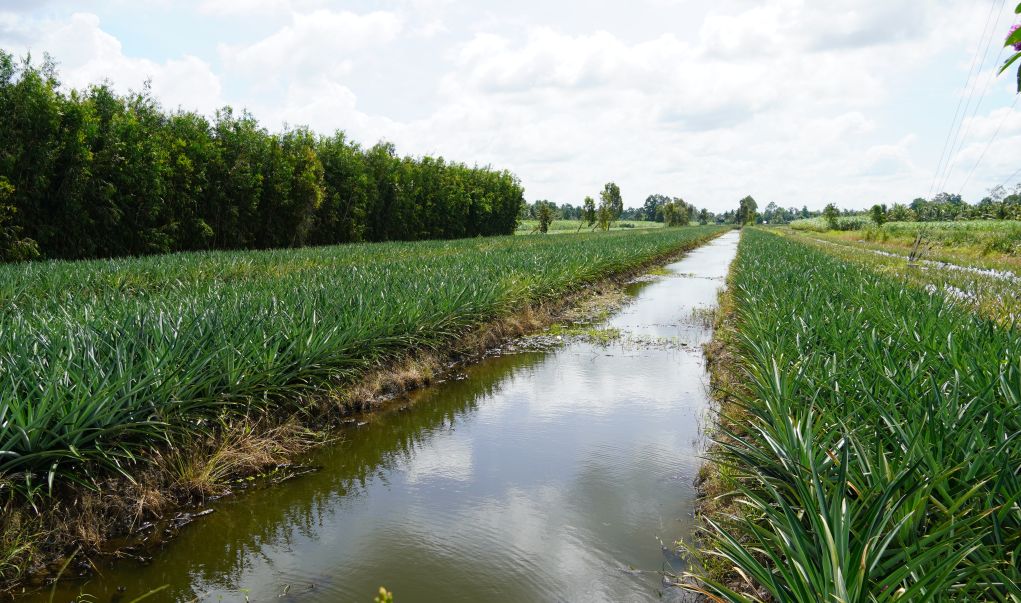
Mr. Tran Phi Hung, one of the first people to grow MD2 pineapple here, shared that this type of tree adapts very well to local land conditions. In the first crop, the family earned about 60 tons per hectare, even though they only sold the bucket for 5,500 VND/kg, they still made a profit. From there, he decided to continue planting the second crop. This time, the company has a new contract with clear classification, expected to bring higher profits.
According to Mr. Hung, farming is relatively easy, mainly fecal fertilization once a month, while there are almost no pests and diseases. The couple can completely take care of 2 hectares of pineapple without having to hire more workers. In particular, with technical guidance from the associated company and the initiative of growers, pine trees are showing clear efficiency in both productivity and quality.
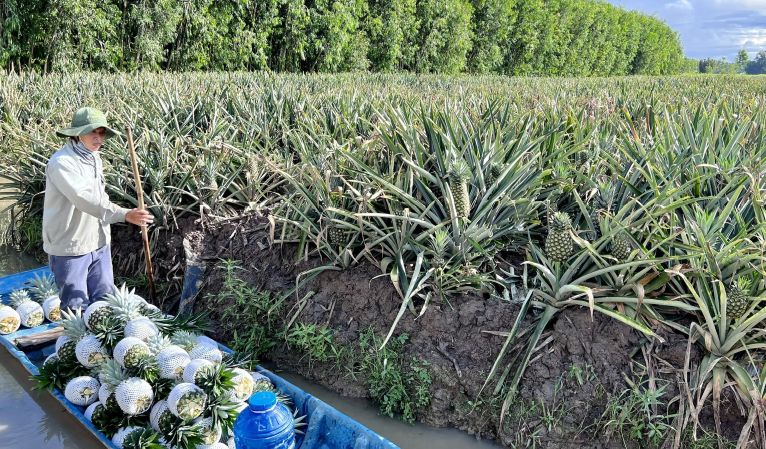
Mr. Vo Thanh Tung, another farmer in Long Hung commune, said that each pineapple crop yields about 70 tons/ha. After deducting expenses, the profit is about 100 million VND/ha/year. On average, 1,000 m2 can be planted with 4,000 pine trees, if well cared for, the yield can reach 6-7 tons. The profit can reach about 10 million VND/1,000m2/year, much higher than growing sugarcane or cajuput before, Mr. Tung calculated.
Mr. Tung also said that pineapple prices are also being adjusted in the direction of benefiting farmers. If before, it was only sold in buckets, now the company has applied the classification method, in which type 1 pineapple costs up to 6,500 VND/kg, type 2 is 5,700 VND and type 3 is 3,000 VND. Classification not only helps increase the value of pineapple but also encourages growers to comply with technical procedures, aiming for quality instead of quantity.
Confident because of guaranteed output
The success of the model comes not only from the adaptive characteristics of pine trees but also thanks to the methodical cooperation with a company specializing in fruit export in Can Tho City.
Mr. Tran Phi Hung said that the enterprise not only provides seeds and input materials but also covers all post-harvest products for export. Every week, the company's agricultural engineers visit the garden and consult on care procedures suitable for each growth stage of the plant.
"A notable point in the model is the strict control of the production process. 4 months before harvest, growers are not allowed to spray or fertilize any chemicals. Herbal drugs are also strictly controlled. Applying the tarpaulin coating method helps retain moisture, reduce irrigation costs and limit weeds, contributing to increasing production efficiency without affecting the cultivated land," said Mr. Hung.
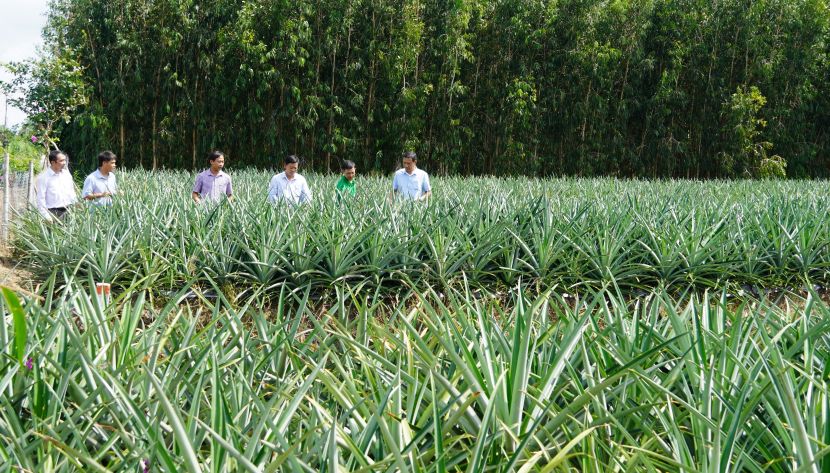
Mr. Nguyen Thanh Dien, Chairman of the People's Committee of Long Hung Commune, Can Tho City, informed from a few pioneering households that up to now, the whole commune has more than 45 hectares of pineapple being cultivated and is expected to increase by 15 hectares this year. MD2 pineapple products are manufactured according to GlobalG.A.P standards, meeting the strict requirements of major export markets such as Europe. Currently, the whole commune has more than 20 hectares of pineapple with a growing area code. To create sustainability for the model, the locality also mobilizes people to establish a pineapple growing cooperative.
Mr. Dien said that in the coming time, the commune will continue to pay attention and direct the conversion of pineapple growing models; continue to expand the area, expand the growing area to connect, stabilize, and create high income for the people. At the same time, there will be a policy to support this model closely and sustainably.





